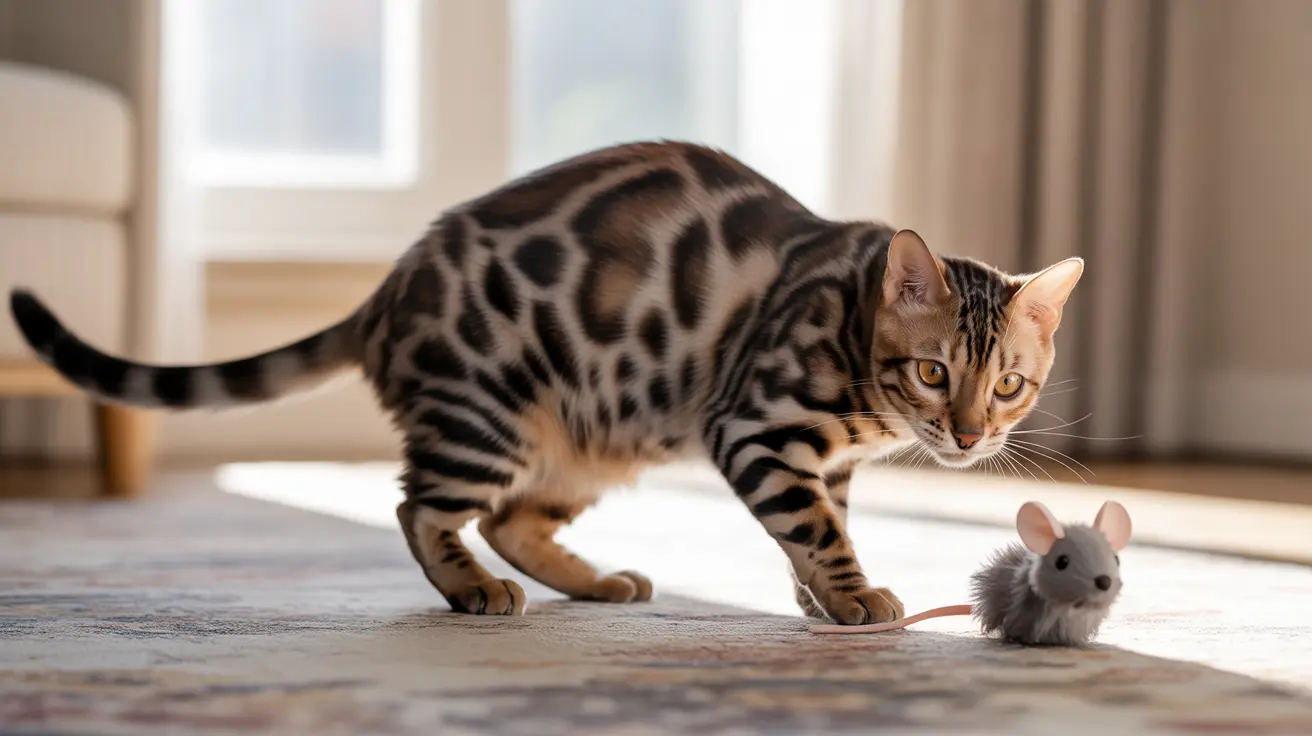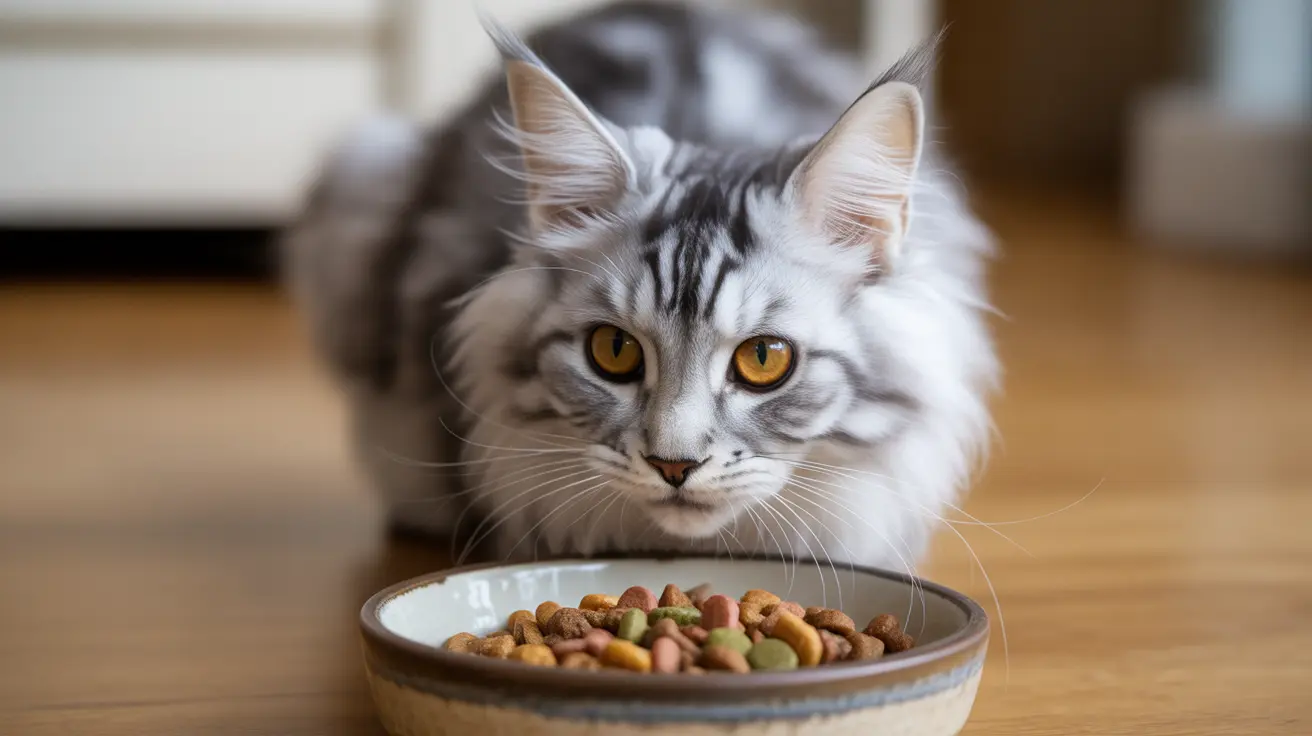Bell Cat Toys Impact on Hunting Instincts: Why These Popular Toys May Harm Your Cat
The jingling sound of bells on cat toys might seem harmless or even entertaining to many pet owners, but these seemingly innocent additions can significantly disrupt your cat's natural hunting instincts and overall well-being. Understanding the bell cat toys impact on hunting instincts is crucial for every cat owner who wants to provide their feline companion with appropriate, safe, and enriching play experiences.
While bells have been commonly added to cat toys for decades, recent insights into feline behavior and psychology reveal that these noisy additions may do more harm than good. From interfering with natural hunting behaviors to creating potential health hazards, bell-equipped toys present several concerns that every responsible cat owner should consider when selecting playthings for their pets.
This comprehensive guide will explore how bells affect your cat's natural instincts, the safety risks they pose, and provide you with expert-recommended alternatives that support healthy, natural play behaviors while keeping your feline friend safe and engaged.
How Cats' Natural Hunting Instincts Work
To understand the bell cat toys impact on hunting instincts, it's essential to first comprehend how cats naturally hunt. Cats are ambush predators that rely heavily on stealth, patience, and silent movement to successfully capture prey. Their hunting behavior is deeply ingrained and includes stalking, pouncing, and capturing movements that are fundamental to their psychological and physical well-being.
During natural hunting, cats move with deliberate silence, using their padded paws and careful body positioning to approach prey undetected. This silent approach is not just a learned behavior but an instinctual pattern that cats need to express through play to maintain their mental health and satisfy their predatory drives.
The Role of Sensory Input in Hunting Behaviors
Cats rely on multiple senses during hunting, including acute hearing, sharp vision, and sensitive whiskers that detect air movement and vibrations. Their hunting success depends on controlling and minimizing noise while maximizing their ability to detect even the slightest sounds from potential prey.
When toys produce constant jingling sounds, they fundamentally alter this natural sensory experience. Instead of allowing cats to practice their silent stalking skills, bell toys create an artificial soundscape that contradicts their instinctual hunting methods, potentially causing confusion and frustration during play.
Why Bells Disrupt Natural Hunting Behaviors
The bell cat toys impact on hunting instincts is primarily negative because bells directly oppose cats' natural silent hunting methodology. When a cat attempts to stalk and pounce on a toy equipped with a bell, the constant jingling sound creates several behavioral conflicts.
First, the noise prevents cats from practicing their natural stealth skills. In the wild, a cat that makes noise while hunting would rarely succeed in catching prey. Bell toys essentially train cats to accept noisy hunting, which contradicts millions of years of evolutionary programming.
Additionally, bells can cause cats to become frustrated with their inability to achieve the silent approach they instinctively seek. This frustration may lead to reduced interest in play, which can negatively impact their physical activity levels and mental stimulation needs.
Behavioral Changes Caused by Bell Toys
Many cats show specific behavioral changes when consistently exposed to bell toys. Some become hesitant to engage fully with toys, displaying tentative or abbreviated play behaviors. Others may show signs of stress or overstimulation, including excessive panting, withdrawal from play, or aggressive responses to the constant jingling sounds.
Cats with particularly sensitive temperaments may develop anxiety around playtime if they associate it with the overwhelming sensory input from bells. This can create long-term negative associations with toys and play in general, potentially leading to behavioral problems and reduced quality of life.
Health and Safety Risks of Bell Cat Toys
Beyond their impact on hunting instincts, bell cat toys pose several significant health and safety risks that pet owners must consider. These dangers range from immediate physical hazards to long-term health complications that can seriously affect your cat's well-being.
Hearing Sensitivity and Stress
Cats have exceptionally sensitive hearing, capable of detecting sounds at much higher frequencies than humans can perceive. The metallic, high-pitched sounds produced by toy bells can be particularly jarring to feline ears, potentially causing stress, nervousness, or even hearing damage with prolonged exposure.
Some cats may exhibit signs of auditory stress when exposed to bell toys, including behavioral changes such as increased anxiety, withdrawal from social interaction, or even aggression. These responses indicate that the constant jingling is causing genuine discomfort and should be taken seriously by pet owners.
Physical Safety Hazards
Bell toys present multiple physical safety risks that can lead to serious injuries or health complications. Bells attached externally to toys can catch on cats' claws during play, potentially causing nail injuries or getting stuck in ways that could harm the cat's paws or legs.
Additionally, bells pose significant choking hazards if they become detached from toys. The small size and metallic composition of most toy bells make them particularly dangerous if swallowed, as they can cause choking, dental damage if bitten forcefully, or internal injuries if they pass into the digestive system.
Toxic Materials in Cheap Bell Toys
Many inexpensive cat toys with bells contain toxic substances from cheap plastics, poorly manufactured metal components, or dangerous fillings. These materials can pose serious health risks if cats chew on or ingest parts of the toys during play.
Low-quality bell toys may contain hazardous fillings like polystyrene beads or nutshells, which can cause intestinal blockages or other serious digestive complications if consumed. The bells themselves may be made from metals containing harmful substances that could affect your cat's health over time.
Expert-Recommended Safe Toy Alternatives
Understanding the negative bell cat toys impact on hunting instincts and safety concerns, pet care experts recommend numerous safe alternatives that support natural hunting behaviors without causing sensory overload or physical harm.
Simple and Safe Play Options
Round plastic shower curtain rings, either single or linked together, provide excellent entertainment without the risks associated with bells. These toys allow cats to practice their natural batting and carrying behaviors while remaining completely safe and silent.
Plastic rolling balls without bells offer the movement and chase experience cats crave while eliminating noise-related stress and safety concerns. Ping-pong balls and practice golf balls are particularly popular choices, especially when used in contained areas like dry bathtubs where cats can safely chase them.
Natural Hunting Simulation Toys
Wand toys with soft feathers or fabric attachments allow cats to engage in realistic hunting behaviors, including stalking, pouncing, and capturing prey-like objects. These toys should be used under supervision and stored safely when not in use to prevent ingestion of small parts.
Sisal-wrapped toys provide texture for clawing and wrestling while remaining safe and durable. Empty cardboard tubes from toilet paper or paper towels offer inexpensive entertainment that cats can safely chew, carry, and manipulate according to their natural instincts.
Comfort and Enrichment Options
Soft stuffed animals sized appropriately for carrying or wrestling provide comfort and satisfy cats' need to practice "killing" behaviors in a safe environment. Choose toys that are machine washable and free from dangerous fillings or small detachable parts.
Cardboard boxes, paper bags with handles removed, and cat tunnels create hiding spaces and exploration opportunities that support natural hunting behaviors while providing safe, quiet play experiences. Placing a ball inside tunnels can combine multiple play elements without introducing harmful bells.
Identifying Signs of Toy-Related Stress or Injury
Cat owners must learn to recognize signs that their pets may be experiencing stress or physical problems related to their toys. Early identification of these issues can prevent more serious health complications and improve your cat's overall well-being.
Behavioral Warning Signs
Watch for changes in your cat's behavior around playtime or when exposed to certain toys. Signs of stress or discomfort may include excessive vocalization, anxiety during play sessions, reluctance to engage with toys, or sudden behavioral changes such as aggression or withdrawal.
Cats experiencing auditory stress from bell toys may show increased skittishness, hiding behaviors, or apparent irritation when toys are presented. Some cats may actively avoid areas where noisy toys are present or show signs of fear when they hear jingling sounds.
Physical Health Indicators
Monitor your cat for physical signs that may indicate toy-related injuries or ingestion of dangerous materials. These signs include abnormal urination or defecation, changes in appetite, vomiting, coughing, breathing difficulties, or changes in gum color.
Temperature abnormalities, excessive limping, or your cat's desire to stay unusually close to you may indicate serious health problems potentially related to toy ingestion or injury. If you observe any of these signs, consult a veterinarian immediately and bring the suspected toy if possible.
Guidelines for Selecting Age-Appropriate Safe Toys
Different life stages and individual cat personalities require specific considerations when selecting safe, appropriate toys that support natural hunting behaviors without compromising safety.
Kitten-Specific Considerations
Kittens enjoy hands-on, interactive play with fishing pole toys, lightweight balls, and supervised exploration of safe objects. However, they are particularly vulnerable to ingesting small parts, so extra caution is needed when selecting toys for young cats.
Avoid introducing climbing toys or complex structures until kittens are at least four months old to prevent falls and injuries. Focus on simple, safe toys that encourage natural play behaviors while building confidence and physical coordination.
Adult Cat Preferences
Adult cats often enjoy more independent play options, including tunnels, exercise wheels, and interactive puzzle toys that challenge their intelligence while satisfying hunting instincts. However, supervision remains important, especially with new toys or those containing small parts.
Consider your individual cat's activity level, size, and preferences when selecting toys. Some cats prefer soft, carriable toys while others enjoy more active chase and pounce games with rolling balls or wand toys.
Creating DIY Safe Cat Toys
Many safe, engaging cat toys can be created at home using common household materials, allowing pet owners to provide enrichment while ensuring complete control over materials and safety features.
Simple homemade toys include crumpled paper balls, empty cardboard boxes with holes cut for exploration, and fabric strips tied securely to create wand toys. When creating DIY toys, always avoid using string, ribbon, yarn, or other linear materials that could cause strangulation or intestinal damage if swallowed.
Ensure all homemade toys are appropriately sized to prevent choking hazards and regularly inspect them for wear or damage. Replace homemade toys as they deteriorate to maintain safety standards comparable to commercial alternatives.
Frequently Asked Questions
Are all bells on cat toys dangerous?
While not all bells pose immediate danger, most experts recommend avoiding them due to their potential to disrupt natural hunting behaviors, cause auditory stress, and present choking hazards. Bells wrapped securely inside toys may be somewhat safer than external bells, but bell-free alternatives are generally preferred.
How can I tell if my cat is stressed by noisy toys?
Signs of toy-related stress include reluctance to play, excessive vocalization, hiding behaviors, aggression around toys, or sudden behavioral changes. Cats may also show physical signs like panting, excessive grooming, or changes in eating habits when experiencing stress from overstimulating toys.
What should I do if my cat has already swallowed a bell or toy part?
Contact your veterinarian immediately if you suspect your cat has ingested a toy bell or other foreign object. Do not attempt to induce vomiting or pull any visible string or material from your cat's mouth, as this can cause additional injury. Bring the toy if possible to help the veterinarian assess the situation.
Are laser pointers safe alternatives to bell toys?
While laser pointers don't pose the same physical risks as bells, they can cause psychological frustration because cats cannot actually "catch" the light. This can lead to behavioral problems and should be used sparingly, always ending play sessions with a physical toy the cat can successfully capture.
How often should I rotate my cat's toys?
Experts recommend rotating toys weekly to maintain interest and provide variety. Offer different types of toys that serve various purposes such as carrying, wrestling, rolling, and comforting. This rotation helps prevent boredom while ensuring your cat has access to appropriate outlets for different natural behaviors.
Can older cats still be affected by bell toys?
Yes, cats of all ages can experience negative effects from bell toys. Senior cats may be particularly sensitive to auditory stress and may have reduced ability to cope with overstimulating toys. Always consider your individual cat's health status and preferences when selecting appropriate toys.
What materials should I absolutely avoid in cat toys?
Avoid toys containing string, ribbon, yarn, rubber bands, small detachable parts, toxic fillings like polystyrene beads or nutshells, poorly made plastics, and any materials small enough to be swallowed. Also avoid toys with sharp edges, loose feathers that could be ingested, or any components that could break off during play.
Conclusion
The bell cat toys impact on hunting instincts extends far beyond simple noise concerns, affecting your cat's natural behaviors, psychological well-being, and physical safety. By understanding how bells interfere with cats' instinctual hunting patterns and recognizing the various health risks they present, you can make informed decisions that prioritize your pet's welfare over conventional toy designs.
Choosing safe, bell-free alternatives not only protects your cat from potential hazards but also provides more appropriate outlets for their natural predatory instincts. Simple toys like plastic rings, cardboard boxes, and supervised wand play offer engaging experiences that support healthy behavior patterns while eliminating the risks associated with bells. Remember that the best cat toys are those that allow your feline companion to express their natural hunting behaviors safely, quietly, and without the stress or dangers that bell-equipped toys can introduce.





